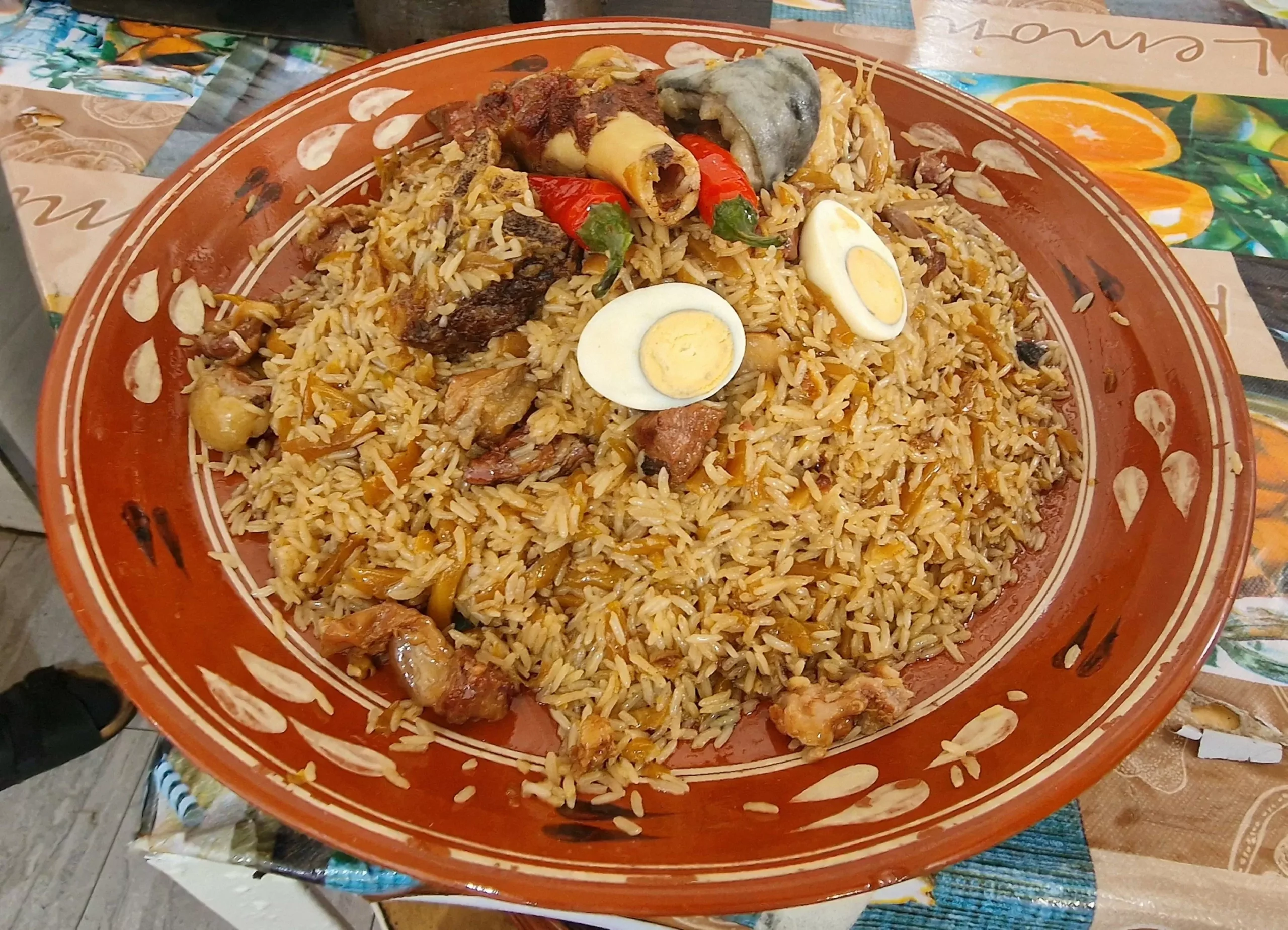Uzbekistan, a country rich in culture and history, is known for its vibrant traditions and customs. And at the heart of these traditions lies a dish that has been an integral part of the country’s culinary culture for centuries – Uzbek pilaf.
Also known as “plov”, “osh” or “palov”, Uzbek pilaf is a rice-based dish cooked with various meats, vegetables and spices. It is believed to have originated in ancient Persia and traveled along the Silk Road, eventually becoming a staple dish in Central Asia.
Today, Uzbek pilaf reigns supreme as the national dish of Uzbekistan and is an integral part of any special occasion or celebration. Whether it is a wedding, a religious holiday, or a family gathering, pilaf is sure to make an appearance on the table, with its rich aroma filling the air and tempting taste tantalizing taste buds.
One of the reasons why pilaf holds such a special place in the hearts of Uzbek people is because of its historical significance. This iconic dish has been a part of the region’s culture for centuries, with each family having their own unique recipe passed down through generations. The preparation of pilaf is also considered an art form, with each step carefully executed to ensure the perfect balance of flavors and textures.
Traditionally, pilaf is cooked in a large cauldron called “kazan” over an open fire. The bottom layer consists of fried meat, usually lamb or beef, and then topped with rice, carrots, onions, and sometimes chickpeas or raisins. The rice is then flavored with an aromatic combination of herbs and spices such as cumin, coriander, and red pepper, before being steamed to perfection. The result is a mouth-watering dish that is both fragrant and flavorful.
But pilaf is more than just a delicious dish; it is a symbol of hospitality and generosity in Uzbek culture. It is customary for families to prepare extra portions of pilaf to share with neighbors and strangers alike, a tradition known as “dastarkhan”. This act of welcoming guests with a plate of pilaf is deeply rooted in the country’s culture, reflecting the warmth and hospitality of its people.
Moreover, pilaf also holds a special place in the hearts of Uzbekistanis because it represents the country’s diversity. As the Silk Road brought various cultures together, so did the ingredients used in pilaf. Over the years, different regions and ethnic groups in Uzbekistan have added their own twist to the dish, making it a fusion of flavors and a representation of the country’s cultural heritage.
Today, Uzbek pilaf has gained international recognition and is loved by food enthusiasts all over the world. In fact, the traditional way of cooking pilaf in a kazan has become a popular attraction for tourists visiting Uzbekistan. Many restaurants also offer cooking classes, giving visitors the opportunity to learn the art of making pilaf from experienced chefs and taking a piece of Uzbek culture back home with them.
In addition to its cultural significance, pilaf is also a nutritious and wholesome meal. The combination of rice, meat and vegetables makes it a complete dish, providing the body with essential nutrients and energy. It is also a popular choice for vegetarians, who can enjoy a meat-free version of pilaf made with chickpeas, lentils, and other vegetables.
As Uzbekistan continues to develop and modernize, pilaf remains a constant reminder of the country’s rich heritage and traditions. It is a dish that has stood the test of time and continues to bring people together, regardless of their background or beliefs. Its enduring popularity is a testament to the love and pride that Uzbek people have for their culture and their cuisine.
In conclusion, Uzbek pilaf is more than just a dish; it is a cornerstone of the country’s culinary culture and a symbol of its traditions and values. From its historical significance to its role in fostering hospitality and diversity, pilaf truly represents the essence of Uzbekistan. So, the next time you visit this beautiful country, make sure to try a plate of this beloved dish and savor the flavors that have been passed down for generations.








